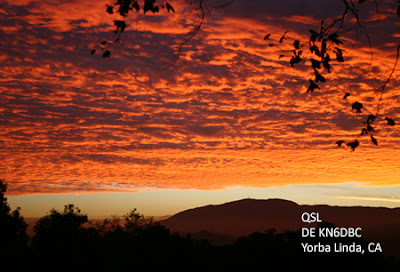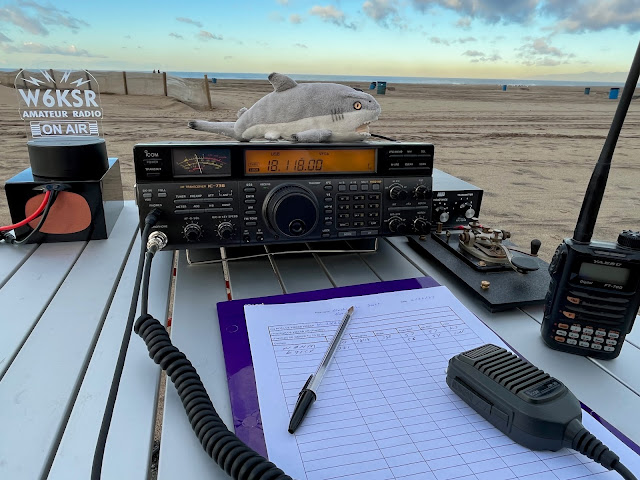QSL?
The last chapter of the 1980 edition of the Radio Shack Short-Wave Listener's Guide describes how to write and send reception reports to shortwave broadcasters. Author H. Charles Woodruff discusses the value of shortwave listener (SWL) reports to broadcasters—both from an engineering standpoint and from a programming standpoint—and promises that most broadcasters will verify listener reports with a QSL card. It didn't take me long to realize that by the 1980s broadcasters relied almost exclusively on monitors around the world to provide detailed signal quality data to station engineers, and that the primary focus of the reception report-QSL process was on the programming side. I came to think of the process as a substitute for the ratings data that are available to domestic broadcasters. The overwhelming majority of shortwave broadcasters received their funding from government agencies, missionary organizations, or by selling airtime (mostly to missionary organizations). Reception reports gave broadcasters a way of demonstrating to those responsible for their funding that the broadcasts were reaching people and, in turn, QSL cards, football-style pennants, posters, and other giveaways created the incentive to keep those reception reports coming.
None of that detracted from the fun of collecting QSL cards. The world has become a smaller place, so today it is somewhat difficult to describe the thrill of walking to the neighborhood post office, buying an airmail stamp, sending a report to some far-off country, and waiting seven to ten weeks to get a card with a colorful design on one side and a postmark on the other from some city that to most of your friends was just a name in a geography textbook. The cards themselves were generally quite well done. Depictions of landscapes, the station studio, or events of cultural or historical significance added a visual dimension to the otherwise aural experience of tuning in the world on shortwave.
I spent twenty-five years working in the printing industry. While I don't think of myself as having anything like the talent of a professional graphic designer, I do have an idea of what I like, and considerable familiarity with the tools. When I became a radio amateur, it seemed only natural that I would design my own QSL cards. It's turned out for me to be one of the most enjoyable aspects of the hobby. A little of my own photography here, some clip art there, some cool typography to tie it all together, and I've found a fun little A6-sized creative outlet.
At first it was relatively easy to formulate a QSL policy. My first—and for about the first year, only—rig was a Yaesu FT-70D, which I used mostly for satellite communications. I'd send out QSL cards on first contact for all satellite QSOs; simplex and terrestrial repeater contacts, not so much. It turned out to be, as I would learn later, an interesting coincidence that paper QSL cards are very popular among the amateur satellite community, and a considerable number of my fellow satellite hams shared my enthusiasm for QSL card design.
When I got my first HF rig in the summer of 2020, a few things happened right away. I started making more contacts. A lot more contacts. I worked more stations. A lot more stations. And I started to realize that not all hams see paper QSL cards quite the same way I do, or quite the same way satellite operators do. I was going to need to come up with a new QSL policy, one that would still give me a chance to have some fun designing, sending, and receiving cards but one where I wouldn't be committing the printing and postage costs to sending hundreds of cards each month to operators who might not be all that excited to get them.
The diminished enthusiasm among some of the amateur radio community for paper QSL cards is understandable and inevitable. Strictly as a means of validating a contact (e. g. as part of the application process for an award), paper QSL cards are about as useful to a ham as SWL reception reports were to broadcast engineers. Logbook of the World (LotW), once you complete the setup process and get used to some of its quirks, is a far easier way to document contacts, and it has gained nearly ubiquitous acceptance. Award applications are a breeze with LotW. Once when I was nearing completion of my VUCC award, I reached out to a card checker to validate the three or four grid squares that were confirmed by card only. The card checker was a genuinely friendly guy who was more than happy to try to help, but it's not like the ARRL went out of its way to make the process easy. In the end I just waited to pick up a few more grid squares in LotW, and I suspect I'll do the same when it's time to apply for my WAS award.
This means that the function and purpose of the QSL card has shifted. It's really more about the intrinsic enjoyment of the cards themselves: an A6-sized expression of creativity and gratitude for the contact, something to add a visual dimension to an otherwise mostly aural activity. Not every ham is going to be interested in that particular aspect of the hobby and there's nothing wrong with that. The trick when sending cards is to try to determine who looks forward to that daily trip to the mailbox to find the latest stack of QSL cards and who doesn't. What I've discovered is that a certain amount of inconsistency and guesswork is unavoidable.
I no longer have a coherent QSL policy. I avoid sending cards to anyone who requires an SASE or other help with postage, but I've made exceptions for club stations and overseas stations. I generally don't send cards for digital mode contacts, but I've made a few exceptions there, notably for an FT8 contact with a Japanese station whose operator sends and origami crane with each QSL card. I considered not sending cards for contest QSOs, but then I found out through a friend that some of the CWops folks thought it was really cool that I'd send cards for CWT contacts. Ultimately I'm trying to get cards out to hams that I think will really enjoy receiving my card, and not bother those hams who are content to log the contact and move on. I really only have two hard and fast rules. The first is that I log all satellite and HF contacts in LotW. The second is that I honor all valid requests for a QSL card, including requests from SWLs. And card or no card, if our stations have ever made contact or you've ever monitored my signal, it was a lot of fun sharing this radio thing and I hope to CUL.














Great job on the post mate. I agree 100% on the QSL task.
ReplyDeleteNowadays with the Internet paper QSL's have lost all their glamour.
But as you say those who love them on paper and SWL requests are worth sending.
73 from EA6VY (@luisXLmartin